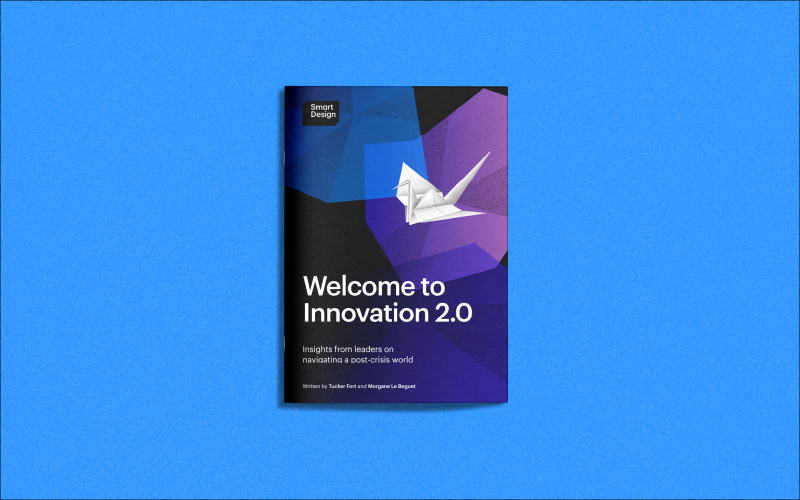Welcome to Innovation 2.0
Insights from leaders on navigating a post-crisis world
Harder. Better. Faster. Stronger. It turns out that as well as being insanely catchy, this Grammy award-winning track by Daft Punk was also prophetic. When we asked design and brand leaders to tell us how Covid has changed the way they work, these four clear trends emerged. But what advice can leaders give companies looking to innovate in this new reality?
01
Work it harder
Digital transformation is juicing up the innovation process as well as the final product
Drive trust with collaborative tools
“
When we have the ability to share the back room of a research session: it creates more buy-in from different stakeholders.

Digital platforms (sometimes) boost agility
“
Use data to do more and do it better: not just to rubber stamp an idea; but as a source of the idea itself.

Introduce an “Innovator’s Hour”

Welcome to Innovation 2.0
Insights from leaders on post-crisis innovation
02
Make it better
Human-centered design isn’t a choice, it’s an imperative
Change your mind(set)
“
To survive these days, companies must figure out how to go from making a product push to being experience-led.

Redesign your company, not just your product
Expand into ecosystems
“
Building on our innovation ecosystem has been more important than ever.


Welcome to Innovation 2.0
Insights from leaders on post-crisis innovation
03
Do it faster
Iterative and short-term is the new mid and long-term
Do sweat the small stuff
“
The patience for long-term innovation is gone.

Don’t kill ideas too quickly
Quicker, smaller pilots lead to bigger ideas
“
When you’re doing it right, it’s easy to move fast.


Welcome to Innovation 2.0
Insights from leaders on post-crisis innovation
04
Makes us stronger
Creative connectors are the new innovation superstars
Hiring talent: Draw what you love
“
Remote working has put pressure on design leaders to look across business groups, connect the dots, and say: you really need to talk to this person.

Balance control & empowerment
Get fresh
“
Foreseeing what creative minds need in a digital, distributed, high burnout, high turnover time should be top priority for innovation leaders.

Keeping talent: Be kind, unwind
Conclusion
Innovation is dead, long live innovation
Let’s design a smarter world together
Who we spoke with
About Smart Design
Smart Design helps ambitious organizations build the future. We are an independently-owned strategic design company that humanizes products, services, and experiences through deep research, insights and design strategies. Powered by passion and purpose, we design to help people and businesses thrive.







